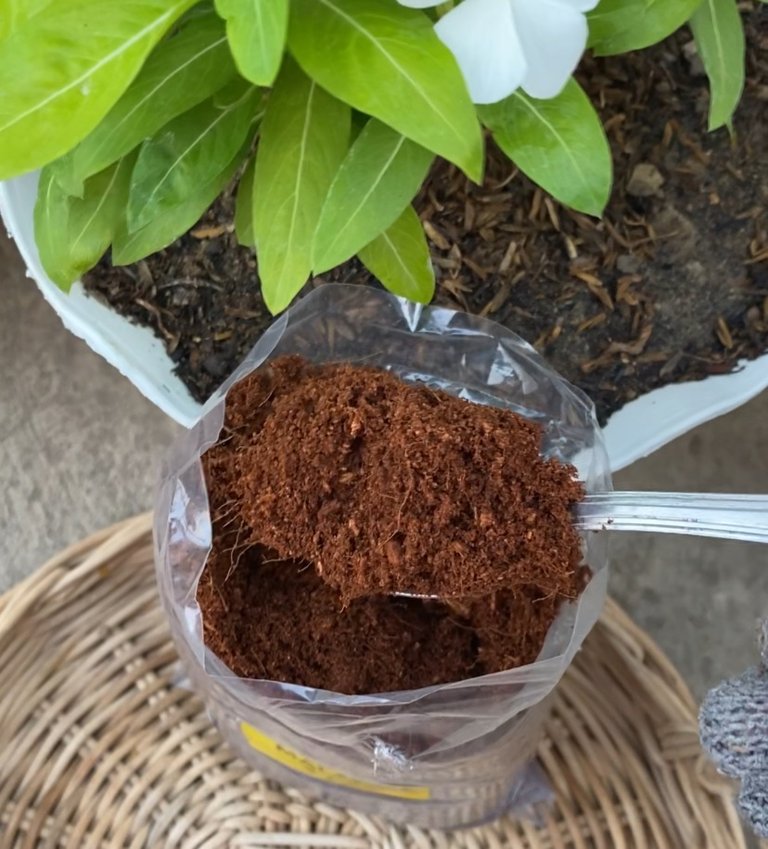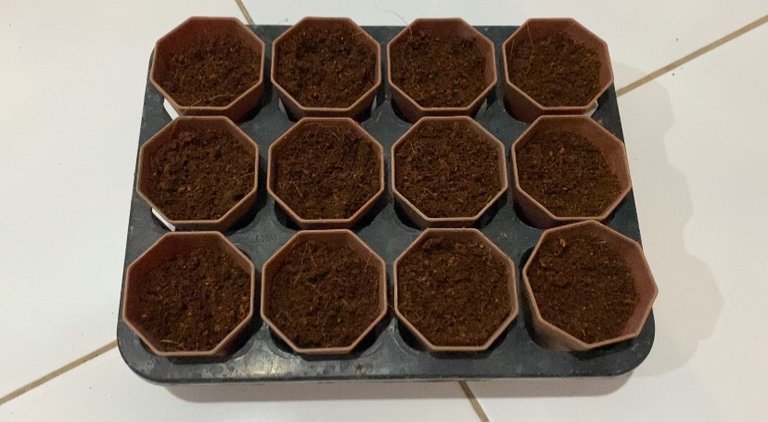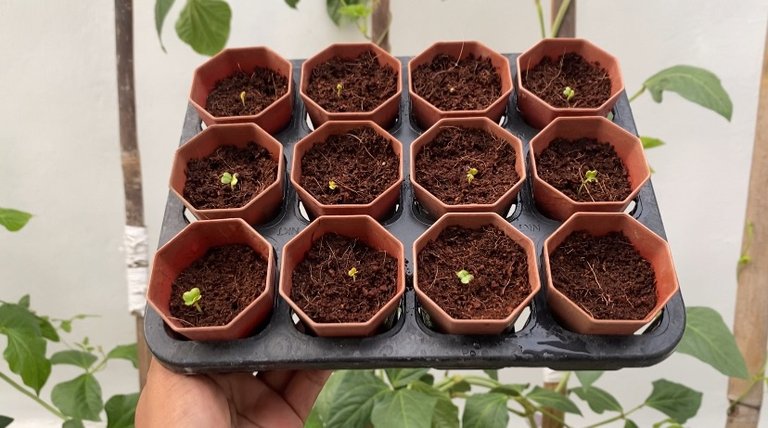The seed-sowing phase is the most important part of gardening. Without sowing, we won't progress to the next stage. Sowing your own seeds also saves more on gardening costs than buying ready-to-transplant seedlings.

But recently, sowing seeds has become more challenging due to the dry weather and temperatures reaching 37 degrees Celsius. So I looked for other solutions to increase seed germination success.
Then, I thought about cocopeat. Have you ever heard of cocopeat? Our country has an infinite natural resource of coconuts. Fortunately, there are many innovations using coconut fiber. One of them is cocopeat for planting media, especially for seedling media.
However, cocopeat must be processed several times to reduce and even eliminate the tannin content. We can wash the cocopeat repeatedly until the color of the cocopeat is no longer brown. Then, it needs to be dried again in the sun.
Indeed, the steps to prepare cocopeat for use as a planting medium are quite complicated. Fortunately, many agricultural activists now sell ready-to-use cocopeat.


I actually received a free sample from a cocopeat growing medium entrepreneur. So, I cautiously tried growing seedlings using it.

I prepared pots for sowing. Then, I placed the ready-to-use cocopeat into small seedling pots. I used 12 seedling pots in total.
 I sowed Chinese cabbage seeds. The seeds are not as small as spinach seeds.
I sowed Chinese cabbage seeds. The seeds are not as small as spinach seeds.
 I placed the Chinese cabbage seeds on the surface of the cocopeat, then covered them lightly with the cocopeat.
I placed the Chinese cabbage seeds on the surface of the cocopeat, then covered them lightly with the cocopeat.
 Then, I watered them until the cocopeat was moist.
Then, I watered them until the cocopeat was moist.
The advantage of cocopeat growing media is that it can retain water longer. This is great for seeding, as it requires a consistently moist seedbed for rapid seed germination.
I don't need to water more often. Usually, I have to water the seedbed up to five times a day due to the dry weather in my garden. But with the cocopeat I use, I only need to water once or twice a day.

Within five days, the Chinese cabbage seeds I sowed had germinated and produced small leaves. I exposed them to the morning sun for about an hour to help them become healthy seedlings.


Seven days after sowing, I added finely ground, fermented goat manure as initial fertilizer. Because the cocopeat I used didn't contain soil or fertilizer, I would have to add soil and fertilizer gradually.
At 12 days after sowing, they looked healthier. However, three seedlings didn't survive. So, I've only been able to keep nine Chinese cabbage seedlings so far.


At 12 days old, I added a growing medium. The growing medium I used was a mixture of fine soil, burnt rice husks, rotted rice husks, and goat manure.

Now, these Chinese cabbage seedlings are 21 days old after sowing. They are ready to be transplanted into larger growing media.

Meanwhile, I'll prepare the growing medium using polybags. So, it will take a few days to transplant these seedlings.
Overall, I'm quite satisfied with my first experiment with sowing using cocpeat. I'm excited to try sowing other seeds using this method.
Have you ever seen a sowing method using cocpeat before? Cocopeat can also be used as a growing medium just like regular soil. However, it needs to be supplemented with other materials to support plant growth. So, until my next plant update!

Best Regards,
Anggrek Lestari

Anggrek Lestari is an Indonesian fiction writer who has published two major books. Now She is a full-time content creator. She has a goal to share life, poem, and food content that makes others happy and can get inspiration.
Contact Person: authoranggreklestari@gmail.com
Discord: anggreklestari#3009
Posted Using INLEO







